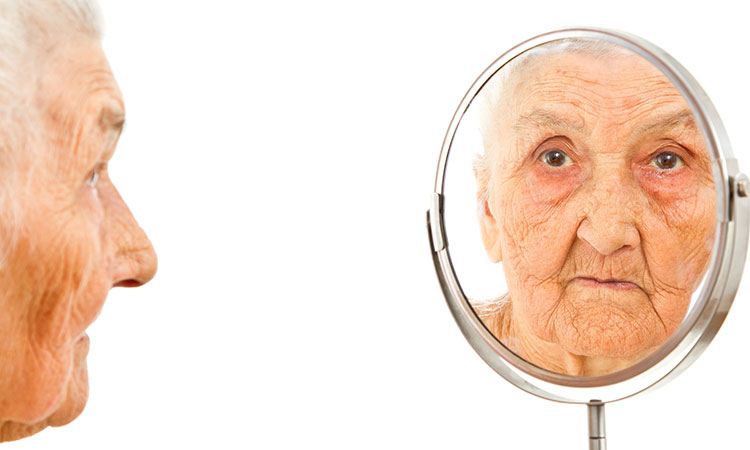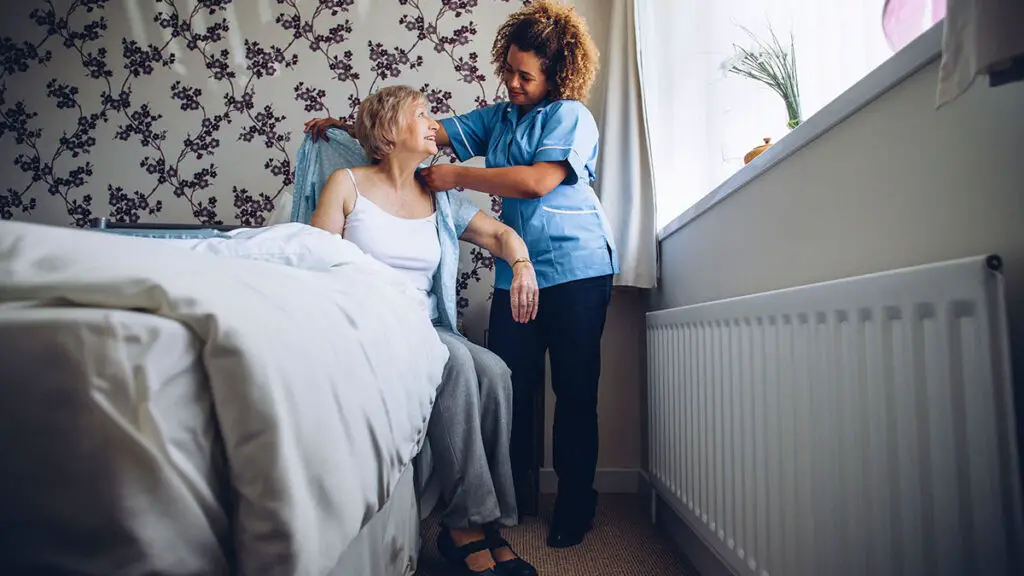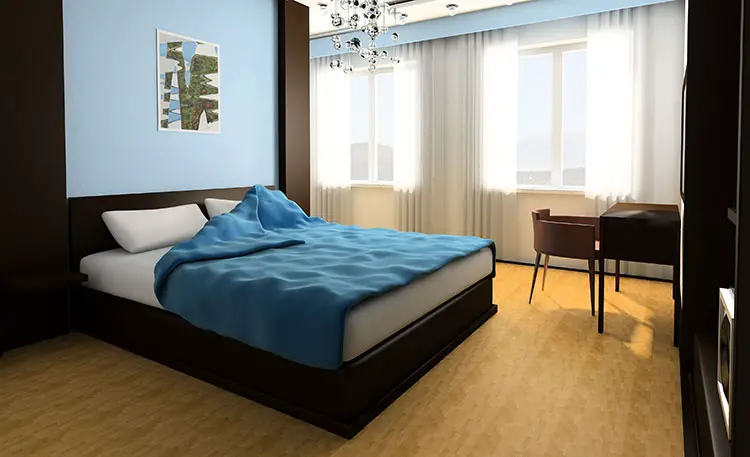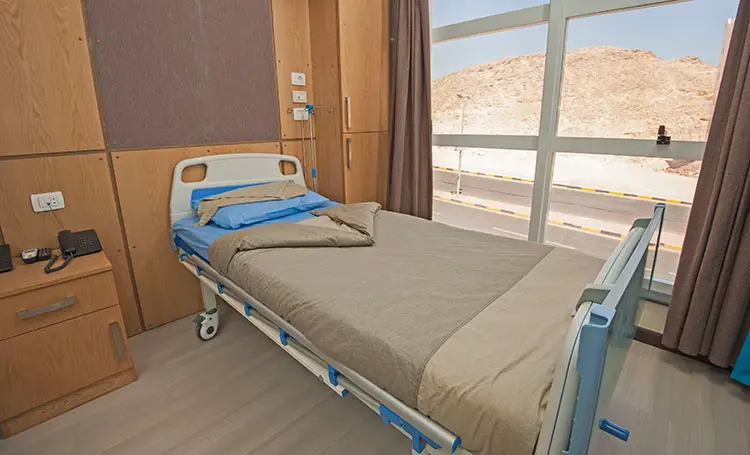This article is a continuation of our Alzheimer’s Disease home safety series. The first article covered the house generally, but here we begin diving into individual rooms, starting with this one – Alzheimer’s Disease bedroom safety.
All of these article are adapted from my book, Staying Home: A Caregiver’s Guide to Making Your House Alzheimer’s Safe. You can buy the entire book or go through this series of articles.
We need to address each room in the house and there’s no doubt that the bedroom is one of the most important rooms to start with. The bedroom is where people spend much of their time, resting, sleeping, and dressing. When you take the proper steps, the bedroom may also act as a haven or get-away for someone with dementia.
The bedroom could be their special space, a place to read, to do crossword puzzles, or even rummage through his or her personal items. There are a number of adjustments, many of them simple, which can be implemented to ensure a safe and comfortable bedroom retreat.
We’ll break down Alzheimer’s Disease bedroom safety step by step. I have also created a printable PDF checklist that you can download and print to use as you walk through the bedroom where the person with Alzheimer’s will stay.
Download Alzheimer’s Disease Bedroom Safety Checklist (PDF)
I would recommend using that checklist after going through this article. You can understand what goes into bedroom safety for the person with Alzheimer’s in this article, and then use the checklist as a reminder of what to watch out for or fix.
Step One: Make Sure it is Well-lit
People with dementia may suffer from changing vision and a well-lit room can make a big difference in their ability to get around.
Ask yourself these questions:
- Is the light switch easy to find?
- Is the wattage bright enough?
- Is there a light source beside the bed?
Equip overhead light fixtures with the highest wattage they will handle. To help find the light switch in a dim room, you can purchase and install brightly covered light switches or even switch plates that glow in the dark.
- Before You Buy - The SwitchLight requires your light switch to have 2 side screw terminals in order for the prongs to draw power. Check your light switch for those screws. Use the 2nd image for reference.
- Where Does It Work? - The SwitchLight is designed to work on a Single-Pole switches, where a single light switch controls one light fixture in the room or hall.
Consider removing lamps entirely as they are harder to turn on and off. Eliminating lamps will reduce the risks of touching hot bulbs or tripping over cords. Fumbling for a lamp switch also makes it easy to knock lamps off tables, resulting in broken glass and feelings of failure.
In addition to adequate overhead lighting, one or two nightlights that come on automatically when the room darkens are strongly encouraged. If getting up to go to the bathroom at night occurs—and chances are it will, these nightlights will become a necessity.
There are now even nightlights that sit atop nightstands and glow from below. Blys produces such a light that provides a low-level glow, allowing uninterrupted sleep, but on waking provides a focus in the room while illuminating important items on top of it: water, phone, glasses, etc. These speciality products can be pricey, though.
Step Two: Assess Wall Colors
New caregivers are often surprised at this suggestion, but having worked in dementia units before, it becomes obvious how much it matters when you observe people with Alzheimer’s walking down hallways where the doors, floor, and walls are all a similar color. They can walk by a door that blends into the wall. Rugs that match the floor can become tripping hazard. Contrast is key.
The colors of the walls and furnishings also affect mood. Bright, warm colors such as yellow or peach provide mood support as well as more light in the room. Light blue and gray colors may be hard to see and should be avoided. Dark colors will obviously darken the room and should not be used. Contrasting colors between the wall and the floor will help the individual’s depth perception.
Too many colors or prints, whether on the walls or throughout the room, are distracting and can cause confusion and anxiety. Simple is good.
Step Three: Make It Safe
Make getting around the room easier by eliminating clutter and tripping hazards. Remove unnecessary furnishings and furniture that are in the way and could increase the risk of accidents. Create an easy-to-follow pathway from the bed to the bathroom or bedroom door.
Trash cans aren’t only a potential tripping hazard. As the disease progresses, they can be seen as a toilet. Removing trashcans from the bedroom may be a wise idea.
Add a chair if there isn’t one. A chair will allow the individual to rest, read, and relax. Besides removing breakable lamps, take out any breakable or sharp-edged decorations. Look for anything that someone could trip on, and get it out of the room.
Remove mirrors. The person with dementia is often confused by who they see in the mirror. It is not uncommon for them to go back in time, thinking the past is the present. So, when they see themselves in the mirror, it can become confusing and even worrisome when they don’t recognize themselves and think a stranger is in the bathroom with them. Reduce anxiety by removing mirrors.

Look at the furniture in the bedroom. What might be dangerous?
Ask yourself:
- Should I change dressers or other items with sharp edges, or put padding on the corners?
- Is the nightstand wobbly?
- Does the side table have a glass top?
- Is the furniture sturdy enough to lend support if someone leans on it?
- Are curtains flame-retardant? Are the patterns too busy?
Step Four: Simplify
Remember, individuals with Alzheimer’s and dementia become easily confused. To make things less overwhelming, it’s important to simplify their living space. Here are a few tips so that you can make immediate changes:
- Eliminate clutter in the closet. You can install an automatic light that comes on when the closet door is opened and goes off when the door is closed. If the closet doors are difficult to maneuver, remove them and install a light that is motion-activated.
- 【Motion Activate】Light automatically comes on when motion detected in both day and night time. Light turns off in 30 seconds when no motion detected.
- 【Sensitivity Range】Light comes on when someone is walking by.Up to 120 degrees and a distance of 16 feet.
- Organize the closet with a small number of hanging clothes. Offer the individual choices, but not so many choices that they are easily overwhelmed. Make sure everything is within reach to prevent falling. Keep shoes off the floor and placed in holders that can be easily seen and reached.
- Simplify clothing choices in dressers. Label drawers to keep your loved more independent in dressing themselves for as long as possible. Use words or pictures on labels. Again, present choices, but not too many choices.
- Remove unnecessary items or items with sharp edges.
- Consider filling some drawers with personal items appropriate for rummaging. This activity can be a great way to pass time. Having drawers for just this purpose will prevent some unwanted plundering through items in other rooms. Fill the drawers with items of interest, such as scarves, handkerchiefs, a wallet, and old photos.
Step Five: Ensure a Comfortable Temperature
As your loved one may spend a lot of time in the bedroom, a comfortable temperature will be essential. That temperature may be warmer than what the rest of the home’s inhabitants might prefer, so it may be necessary to close vents in the other rooms.
Avoid using a space heater unless you plan to keep a very close eye on your loved one. A space heater could be knocked over, tripped on, or generally present a fire hazard.
Step Six: Assess the Bed
Take a good look at the bed. It is important to have a safe, comfortable bed that one can get easily in and out of. Using your loved one’s own bed for as long as possible will make him feel more at home.
Here are a few tips to ensure comfort and safety:
- Make sure the sleeping area is easy to identify. Use bedding with colors that contrast with the colors of the walls and floor.
- The mattress should be firm and supportive. It is recommended that it be protected with a waterproof cover in order to protect it from any incontinence. It never hurts to have a fire retardant mattress and bedding, either.
- You may need to raise the bed with risers to make it easier to get in and out of. These can be purchased through most department stores for as little as $10. On the other hand, if your loved one is prone to falls, lowering the height may be what needs to be done. You may have to get rid of the frame to make the bed low enough.
- Hard bedframes with sharp corners should be replaced. To help cushion any falls from the bed, you can place a soft mat or pillows on the floor beside it. With a low bed and a soft mat on the floor, the chance of injury should be small.
- Consider bed placement. You might place one side of the bed against the wall to lessen the chances of rolling off the bed. There are two sides to this. Having the bed against the wall also limits access and as care needs progress, the bed may need to be moved out from the wall in order to care for the person from either side.
- Beware of bed rails. Some people believe that bed rails are the answer to keeping one safely in the bed. Not true! Raised rails frequently prove to be more of a danger. The person with dementia may try to climb over them, resulting in injury, or get an arm stuck in them. A low bed and mat on the floor are a safer option.
- Bed bars, similar to grab bars, can be installed near the bed to help the person pull himself or herself out of the bed. If you do opt for some type of bar near the bed, purchase accompanying padding to soften it.
- A “hospital bed” may eventually be needed. This type of bed has controls that can lift either end of the bed up or down and is often covered by Medicare and other insurance plans.
If the level of care exceeds what you can physically do, remember that there is help out there. If you can no longer lift or help transfer your loved one out of the bed and into a chair, there is equipment to help with that, too. Visit the resources section of this book to connect with agencies that can further assist. Don’t risk hurting yourself or your loved one.
Lastly, if bedwetting is an issue, consider sheets for bedwetting to save on laundry and discomfort.
Step Seven: Reduce the Risk of Falls
Although bed bars are great, there are other options to ensure safety. Preventing falls is important as injuries can be significant. Other ways to reduce the chance of a fall include:
- A pressure sensitive pad can be placed under the bedding without compromising comfort. Significant movements will alert the caregiver—hopefully in time to prevent a fall. Similar devices can be attached to a chair, giving the same kind of warning.
- THE SAFEST BED ALARM SYSTEM FOR CAREGIVERS - A caregiver should always be notified as soon as an elderly loved one gets up from bed. The Smart Caregiver Wireless Bed Alarm System is the most-effective emergency alert system for the elderly, or disabled. The perfect hospital bed pad for elderly monitoring. Our bedside device allows caregivers to rest peacefully, knowing they will be alerted in time if their elderly patient gets out of bed.
- 25 YEARS OF RELIABILITY - For the past 25 years, Smart Caregiver bed alarms for elderly monitoring are used by over 2,800,000 Caregivers around the world, nearly 40,000 products being used as home alerts for elderly, throughout upwards of 10,000 caregiver facilities around the world! Unlike our competitors, the Smart Caregiver wireless bed alarm system is the ONLY elderly fall prevention device that can detect bedside movement from up to 300 feet away, providing safety for an elderly patient anytime, anywhere.
- Don’t put heating pads or electric blankets on beds or chairs. Many seniors love their electric lap blankets, but people with dementia won’t recognize when their skin is getting too hot from the heat and they may not know how to turn off the power.
- Make sure the carpeting is secure and doesn’t pose a trip hazard. Use adhesive backings for mats or throw rugs, or remove them completely. Avoid high gloss cleaning agents on hardwood floors. Individuals with dementia are often frightened by freshly waxed, shiny floors, as they look slippery. Socks with grips can add another layer of stability.
Step Eight: Make an Easy Path from Bedroom to Bathroom
Getting up in the middle of the night can be confusing for someone with dementia. If a bathroom is located in the bedroom, install nightlights along the path to the bathroom. This will reduce fear and anxiety while reducing the risk of tripping. Other suggestions:
- Make sure the person can first find the door exit the bedroom. You can accomplish this by painting the door a different color or even just the door frame. If the bathroom is down the hall, put nightlights in the hallway, along with handrails to help guide the person to the bathroom. If needed, label the bathroom with a bright or glow-in-the-dark sign.
- Consider adult pads for night use. If getting up at night results in injury, particularly if the person has incontinence issues, it might be time for adult pads. There are high-quality pads and adult diapers on the market that hold moisture, such as urine, away from the skin to prevent skin rash and breakdown. Use of these items could help prevent injuries at night while helping ensure a good night’s sleep for the person with dementia.
- Help your loved one attend to any toileting needs right before bedtime to reduce the need to get up during the night. Keep in mind that no matter what you do, there will be instances of getting up during the night, as the sleep cycle of the person with dementia changes.
Step Nine: Make Life as Simple as Possible
Consider other items. Would your loved one ring a bell for assistance? If so, place one on a nightstand next to the bed. Add a “ring for help” note if that would help.
Consider using a baby monitor to hear what might be happening in the room. Taking it further, an indoor surveillance system might be in order. If you do opt for a camera system, camouflage it in a plant or other item to detract attention from it.
- 3.5" Large Display Seeing Your Baby in Viewing Control - We listened to the feedback from parents, guardians, nanny, and caregivers when manufacturing our video baby monitor.This baby monitor is equipment with 3.5 inch large display in consideration of smaller screen may be difficult to cover baby’s full view.The Kidsneed SM935A is a baby monitor with camera features such as Pan-Tilt-Zoom. With the controls, you can always have a clear view of your baby from any angle or a close look.
- Baby Monitor with Night Vision - Automatic night vision mode with clear greyscale infrared images lets you effortlessly check your baby's live situation as you stay in bed at dark night. Now, there is nothing stopping you from doting on your child all day and night with our video monitor.With up to 1200mAh big battery, this system lets you monitor your baby throughout the night on a single charge .
The progression of their dementia will help to determine what kind of monitoring devices, if any, you will need.
While putting all these safety measures in place, remember that the bedroom is your loved one’s personal space.
- Decorate the room with favorite photos, books, and quilts.
- Make sure his or her favorite items are within view.
- Make sure their favorite magazines or books are accessible.
- Add decorations from the person’s own home if he or she is moving in with you.
- Make the room as homey and familiar as possible to enhance a positive sense of wellbeing and belonging.
Alzheimer’s Disease Bedroom Safety Summarized
This is the second article in this series. Further articles will cover specific rooms:
- General Home Safety
- Bathroom Safety
- Living Room Safety
- Kitchen Safety
- Hallways and Entryways
- Outside the Home
Check each of these articles as they become published to continue your home safety assessment.
Want to read my complete guide? Check out Staying Home.
- Grant, Derrick (Author)
- English (Publication Language)









